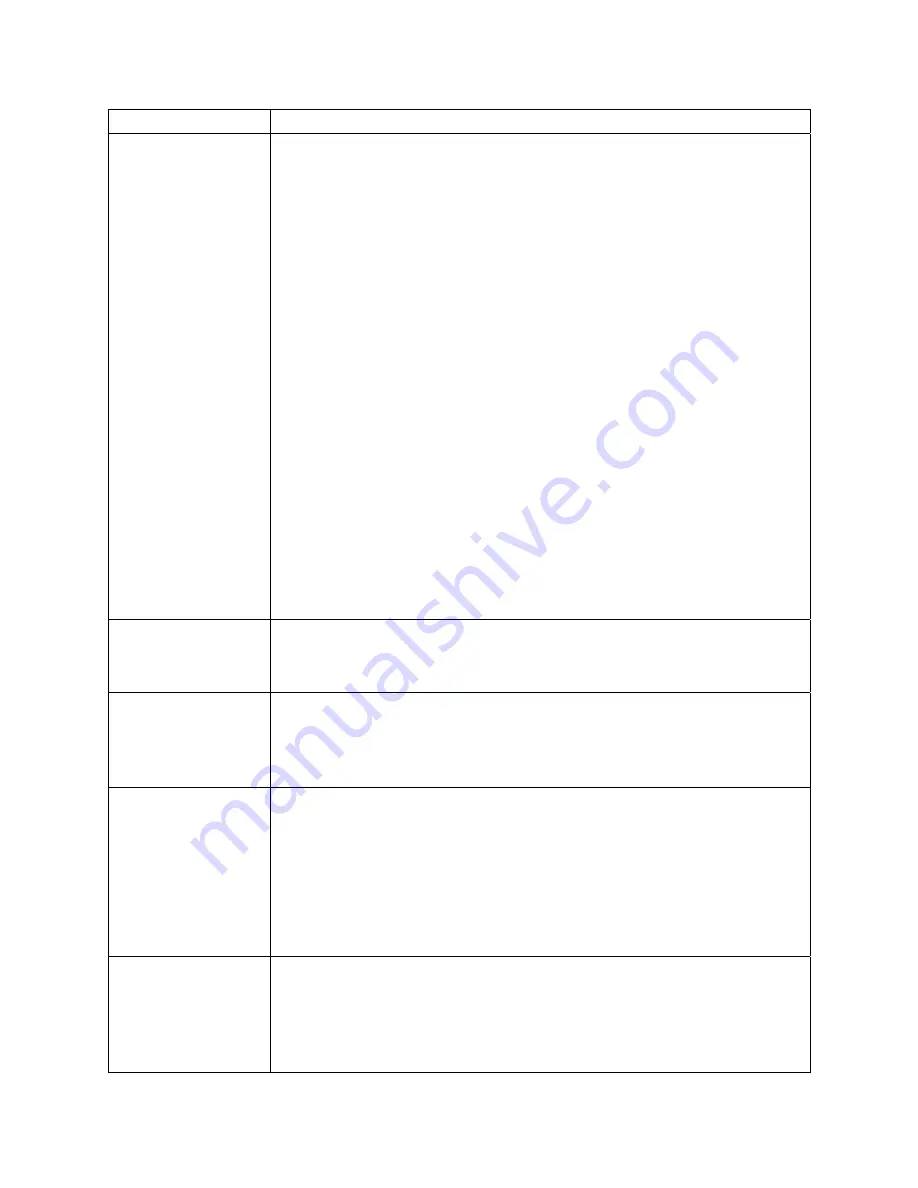
5 TROUBLESHOOTING
60
Problem Possible
Solution
There is no video on
the TV screen
•
Verify that the TV is powered on and set to the appropriate input source for the
DCH receiver.
•
Verify that the DCH receiver is powered on and tuned to an authorized cable
channel.
•
Verify that all video cables between the DCH receiver and the TV are firmly
connected.
•
Verify that the coaxial cable feed is firmly connected to the DCH receiver and the
wall jack.
•
The DCH receiver DVI output may not yet be enabled. Use the component video
(YPbPr) output instead.
•
If the DCH receiver video output is connected to a home theater unit, verify that
the home theater unit is powered on and set to the appropriate input source.
•
If the DCH receiver video output is connected to a TV through an HDMI
connection, power off the TV and then power off the DCH receiver. Wait one
second and then power on the devices.
Not all HDTVs can display every output format (1080i, 720p, 480p, or 480i) available on
the DCH receiver. To select a different format:
•
Ensure that your DCH receiver is plugged into a power outlet and is turned off.
•
Press the MENU key on the front panel. Your settings are displayed on the DCH
receiver front panel display.
•
Press the and keys to display the HDMI/YPbPr OUTPUT setting.
•
Press the key to cycle through the available output formats until a picture
displays on the TV.
No graphics or
program guides
appear on the TV
screen
If you use the IEEE-1394 connection, on-screen graphics, including closed captions and
program guides, are not displayed by the DCH receiver. On-screen graphics and
captions may still be overlaid by your TV, if enabled. Alternatively, use HDMI or
component video instead.
No closed captions
display
•
Verify on the User Settings menu that closed captions are enabled on the DCH
receiver.
•
Verify that closed captions are enabled on the TV.
Note: Closed captioning may not be available on the current program.
There are black bars
to the right and left of
the picture
Wide screen TVs display 4:3 programs in this format unless set to Stretch. Turn on the
4:3 OVERRIDE feature in the User Settings menu. This enables most wide screen TVs
to stretch the video to fill the screen (see your TV manual for information about
stretching 4:3 video).
•
If the DCH6200 is connected to a wide screen TV, verify that the TV TYPE is set
to 16:9 in the User Settings menu.
Many HD programs are broadcast in pillar-box format with black bars to the left and
right of the picture. These programs are broadcast in 16:9 HD formats even though the
video is not 16:9.
There are black bars
above and below the
picture
All 4:3 HDTVs display HD programs in letterbox format (black bars above and below
the picture) because of the shape of the display screen.
•
Turn on the 4:3 OVERRIDE feature in the User Settings menu. This enables most
standard screen TVs to display a full screen picture when the DCH6200 is tuned
to a 4:3 program.
•
Set the TV TYPE to 4:3 Pan-Scan. This enables the DCH6200 to remove the black
Содержание DH6200
Страница 1: ...INSTALLATION MANUAL DCH6200 Installation Manual ...
Страница 2: ......
Страница 6: ......
Страница 10: ......
Страница 18: ......
Страница 57: ...4 DIAGNOSTICS 47 ...
Страница 68: ......
Страница 72: ...Motorola Inc 101 Tournament Drive Horsham PA 19044 U S A http www motorola com 537541 001 a 04 07 ...

















